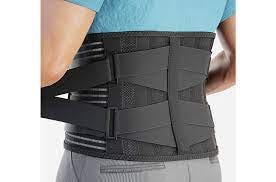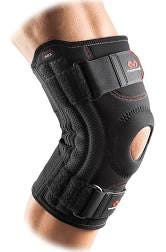We already wear braces - they're called muscles
This is not medical advice.
I know the title might suggest a haughty lecture against wearing a brace, however this article is not that. Just some points to consider whether or not to wear one, or where to get one. Some people do benefit from wearing back and knee braces.
We already wear braces
Our braces are much better. The fabric of a brace bought at a store is passive, meaning it just tries to hold structures together. And it likely doesn’t do a very good job. It’s extremely difficult to hold a moving joint together, especially with the body weight forces involved, vs some stretchy fabric.
Our muscles, tendons, ligaments, and capsules hold our joints together, some of them actively. They respond to movement and adjust for that. They have sensors back to our brain telling us what to correct for. They give us pain signals to warn about the wrong movements. Store bought braces can’t do that (yet).
One orthopedic surgeon taught me why adults are no longer casted, and they receive plates and screws instead. A cast (or brace) is a cylinder over a cylinder. That is not a stable construct. The outside cylinder (cast) is trying to stabilize a fracture by pushing on soft tissue (skin and muscles). The alignment of the fracture over the course of the healing process was not great with a cast. Kids can still be casted because their bone growth is astronomical, and will even make some self correction on alignment.
False sense of security
We might where a brace and think that we can continue with previously painful activity. This continues to place the joint in a less stable position.
We might also continue with the same poor posture and mechanics while wearing a brace, making things worse in the long run.
Knee braces
There is one good thing I have noticed over the years, and that is the availability of decent knee braces. In the 90’s, if someone needed a knee brace, it was a mail order from a medical supply company, and much more expensive. Now I can send someone to a local sports or retail store to buy a sturdy knee brace sleeve, with a hole for the knee cap, and lots of strong adjustable velcro. Some even have plastic or metal hinges to brace the knee side to side.
I would caution against the hinges unless that is really necessary. Our joints also have a small amount of natural “give” to prevent injury. Sometimes we don’t want to cinch it down completely.
A ski boot cinches down an ankle. Once the forces can’t affect the ankle, they are transmitted to the knee, hence, more knee injuries in skiing.
The best braces
Of course the best braces are our muscles, and hopefully you have tried that first. I know this is a tiresome lecture for my regular readers, but if you are new, I will list the links for those suggestions. Balance is a great way to train the joints to hold things together.
This article is about rehab, however the rationale for avoiding wearing a brace is the same,
Best exercises to avoid seeing "Us"
This is not medical advice. Here are is a list of exercise deficiencies that I've noticed across thousands of patients. “Us” means therapists, or other medical personel. Sometimes, we lecture you too much about your health choices, and we’re obnoxious, and maybe we’re hypocrites, and we charge a fortune, and blah, blah, blah... Maybe you can avoid all t…






